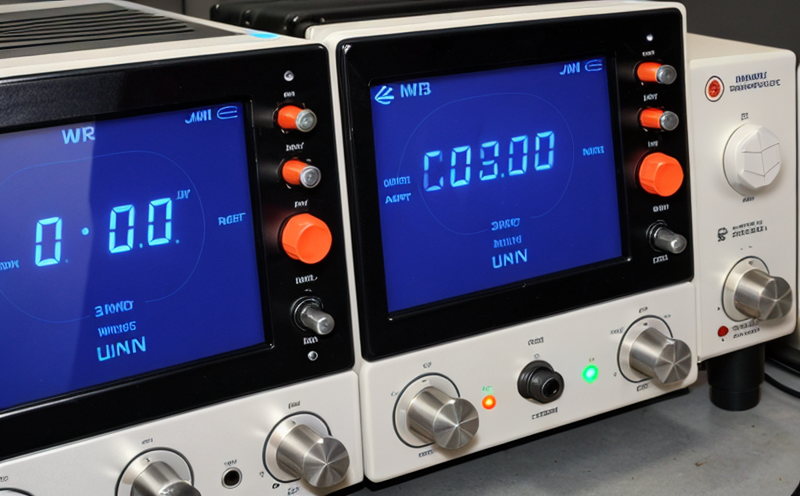ANSI C63.26 RF Performance Testing of Cellular IoT Devices
The ANSI C63.26 standard is an essential benchmark for assessing the radio frequency (RF) performance of cellular Internet of Things (IoT) devices, ensuring they meet stringent quality and safety standards.
RF testing under this standard involves a series of rigorous procedures designed to evaluate how well IoT devices perform in various RF environments. This includes measuring signal strength, interference resistance, and compliance with industry standards. The purpose is to ensure that these devices can operate reliably across different network conditions without compromising user experience or safety.
RF performance testing under ANSI C63.26 is critical for several reasons. Firstly, it helps manufacturers identify potential issues early in the development process, allowing them to make necessary adjustments before product release. Secondly, by adhering to this standard, companies can enhance their reputation and trustworthiness among consumers who value reliability and security. Lastly, compliance with ANSI C63.26 ensures that IoT devices meet regulatory requirements, which is crucial for market entry in countries like the United States.
The testing process itself involves several key steps. Initially, the device undergoes a thorough examination to ensure all components are correctly installed and functioning as intended. Then, using specialized equipment such as spectrum analyzers and directional antennas, engineers measure various parameters including frequency range, power output, and interference levels. These measurements help determine whether the device complies with specified limits set forth by ANSI C63.26.
One of the primary challenges in RF testing is ensuring that devices perform consistently across diverse environments. This requires careful calibration of test equipment and adherence to strict procedures. Additionally, due to the rapid evolution of wireless technologies, staying updated on changes to standards like ANSI C63.26 is vital for maintaining accuracy.
In conclusion, ANSI C63.26 RF performance testing plays a crucial role in guaranteeing that cellular IoT devices function correctly and safely within intended environments. By adhering to this standard, manufacturers not only meet regulatory requirements but also enhance product quality and consumer satisfaction.
Benefits
- Ensures compliance with ANSI C63.26 standards
- Improves device reliability across various RF environments
- Reduces the risk of regulatory non-compliance and potential fines
- Promotes consumer trust through consistent product performance
Why Choose This Test
- Guarantees adherence to industry-leading RF performance standards
- Provides robust data for informed decision-making during development
- Aids in identifying and rectifying issues early in the product lifecycle
- Facilitates smoother regulatory approval processes
Customer Impact and Satisfaction
The successful completion of ANSI C63.26 RF performance testing significantly impacts customer satisfaction by ensuring that IoT devices operate reliably and securely in real-world conditions. This enhances the overall user experience, reducing instances of device malfunctions or failures.
By meeting stringent quality standards, manufacturers can build a reputation for producing high-quality products, which is particularly important in competitive markets. Such a reputation fosters long-term customer loyalty and trust, as consumers are more likely to purchase from trusted brands. Moreover, compliance with ANSI C63.26 helps eliminate the risk of product recalls or returns due to RF performance issues, further enhancing customer satisfaction.
For businesses, this translates into higher customer retention rates and increased market share. It also opens doors to new markets where stringent regulatory requirements are in place, allowing companies to expand their reach globally. Overall, ANSI C63.26 RF performance testing is a strategic investment that contributes to long-term business success.





